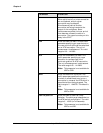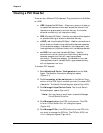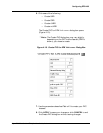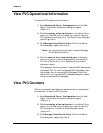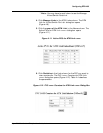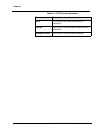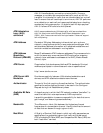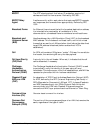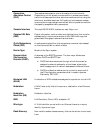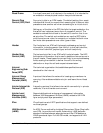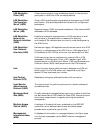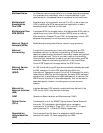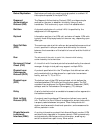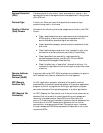
G-2
Cajun P550/P880 ATM Uplink User Guide, Version 1.1
AAL 3/4 handles bursty connection-oriented traffic, like error
messages, or variable rate connectionless traffic, such as LAN file
transfers. It is intended for traffic that can tolerate delay but not cell
loss. To ensure that cell loss is kept to a minimum, AAL 3/4 performs
error detection on each cell and uses a sophisticated error-checking
mechanism that consumes four (4) bytes of each 48-byte payload.
AAL 3/4 allows ATM cells to be multiplexed.
ATM Adaptation
Layer (AAL)
continued
AAL 5 accommodates bursty LAN data traffic with less overhead than
AAL 3/4. Also known as the Simple And Efficient Adaptation Layer
(SEAL), AAL 5 uses a conventional five-byte header. It does not support
cell multiplexing.
ATM Address Consists of 20 bytes. Addressing is hierarchical, as in a phone
network, using prefixes similar to area codes and exchanges. ATM
switches share address information with attached endstations and
maintain endstation addresses in routing tables.
ATM Address
Resolution
Protocol (ATMARP)
Maps IP addresses to ATM hardware addresses. The process works in
much the same way as conventional ARP works when mapping
network-layer addresses to addresses at the MAC (Media Access
Control) layer.
ATM Forum Organization that develops and defines ATM standards. Principal
members participate in committees and vote on specifications.
http://www.atmforum.com
ATM Forum LAN
Emulation
Provides connectivity between LAN-attached endstations and
devices, and ATM-attached endstations and devices.
Authenticator The end of the link requiring the authentication. The authenticator
specifies the authentication protocol to be used in the Configure-
Request during Link Establishment phase.
Available Bit Rate
(ABR)
A class of service in which the ATM network makes a “best effort” to
meet the traffic’s bit-rate requirements. ABR requires the
transmitting endstation to assume responsibility for data that canno
get through, and does not guarantee delivery.
Bandwidth The difference in Hertz (Hz) between the highest and lowest
frequencies of a transmission channel. Usually identifies the amount
of data that can be sent through a given circuit.
Best Effort A Quality of Service (QoS) class in which no traffic parameters are
specified and no guarantee is given that traffic will be delivered.
ATM’s Available Bit Rate (ABR) and Unspecified Bit Rate (UBR) are
both “best effort” services.



